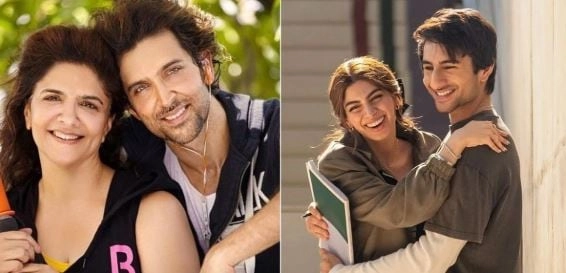The recently released film featuring Hrithik Roshan and Jr. NTR, titled “War 2,” has generated significant buzz, not only for its star-studded cast but also for the controversies surrounding it. The Censor Board has made some major edits to the film, reflecting a growing trend in Indian cinema where regulatory bodies are increasingly scrutinizing content for various reasons, including cultural sensitivity and appropriateness for audiences. One of the most talked-about changes involves the viral bikini sequence featuring actress Kiara Advani, which has been trimmed significantly. This decision has sparked discussions about the portrayal of women in cinema and the balance between artistic expression and societal norms.
The trimming of Kiara Advani’s bikini scene highlights the ongoing dialogue regarding the representation of women in Indian films. While some argue that such sequences are essential for character development or narrative progression, others believe they perpetuate stereotypes and objectify women. The Censor Board’s decision seems to reflect a desire to maintain cultural values, but it also raises questions about creative freedom for filmmakers. As audiences become more discerning and vocal about the content they consume, filmmakers may find themselves navigating a complex landscape of expectations and regulations.
Moreover, the impact of censorship on the film’s reception cannot be understated. With social media platforms buzzing with discussions about the edits and their implications, the film’s marketing strategy may need to adapt to the changing perceptions of the audience. The initial excitement surrounding “War 2” may be tempered by the controversy, potentially affecting box office performance and critical reception. As viewers become increasingly aware of the behind-the-scenes decisions that shape the films they watch, the industry may need to rethink its approach to content creation and censorship.
In conclusion, “War 2” serves as a focal point for broader discussions about censorship in Indian cinema, particularly regarding the portrayal of women and the creative liberties of filmmakers. The significant edits by the Censor Board, particularly the trimming of Kiara Advani’s bikini sequence, reflect ongoing tensions between societal values and artistic expression. As the film industry continues to evolve, it will be essential for stakeholders to engage in constructive dialogues that respect both cultural sensitivities and the creative visions of filmmakers. The outcome of this film could very well set a precedent for future productions, making it a crucial case study in the ongoing evolution of Indian cinema.




